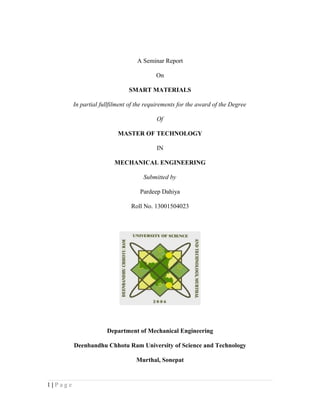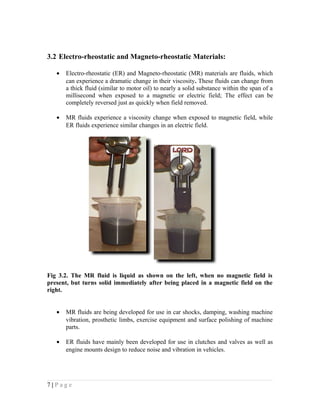The document is a seminar report on smart materials submitted for a master's degree. It defines smart materials as materials that can change properties in response to external stimuli like stress, temperature, or electric/magnetic fields. The report discusses various types of smart materials like piezoelectric materials, shape memory alloys, and magnetorheological fluids. It provides examples of their properties and applications in fields like civil engineering and automobiles. In conclusion, the report examines smart materials' advantages in reducing costs and improving performance, as well as limitations like expense and sensitivity during use.














